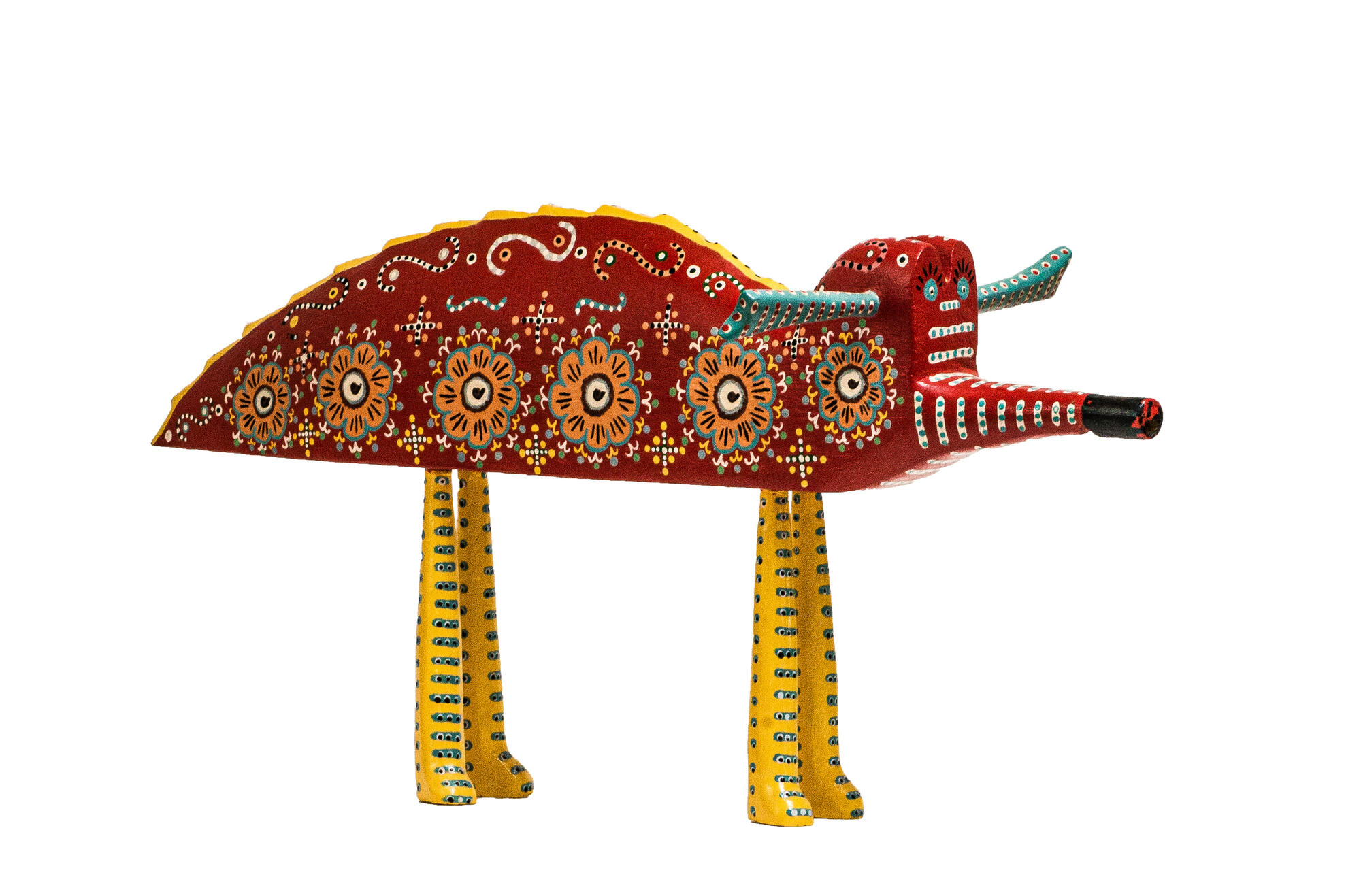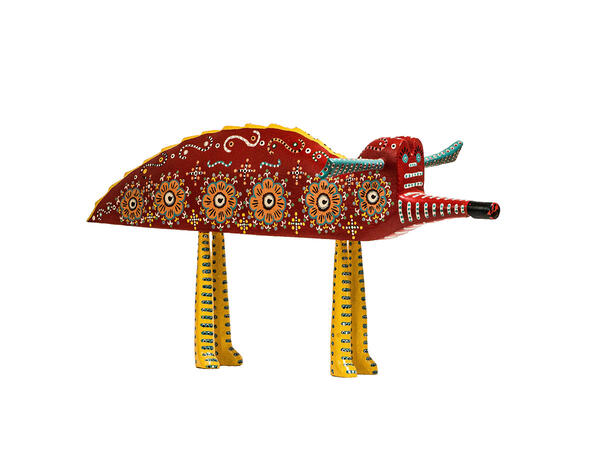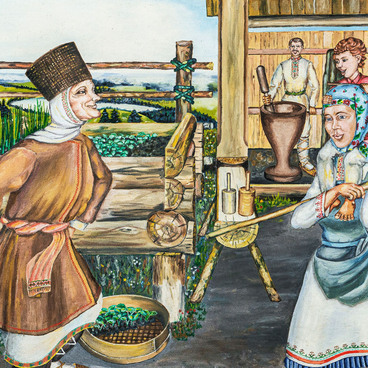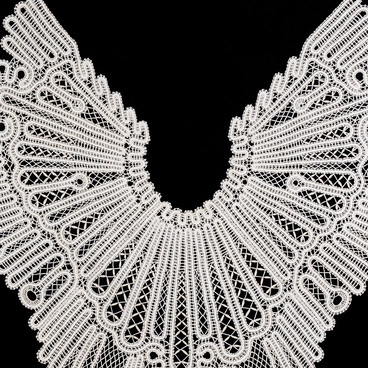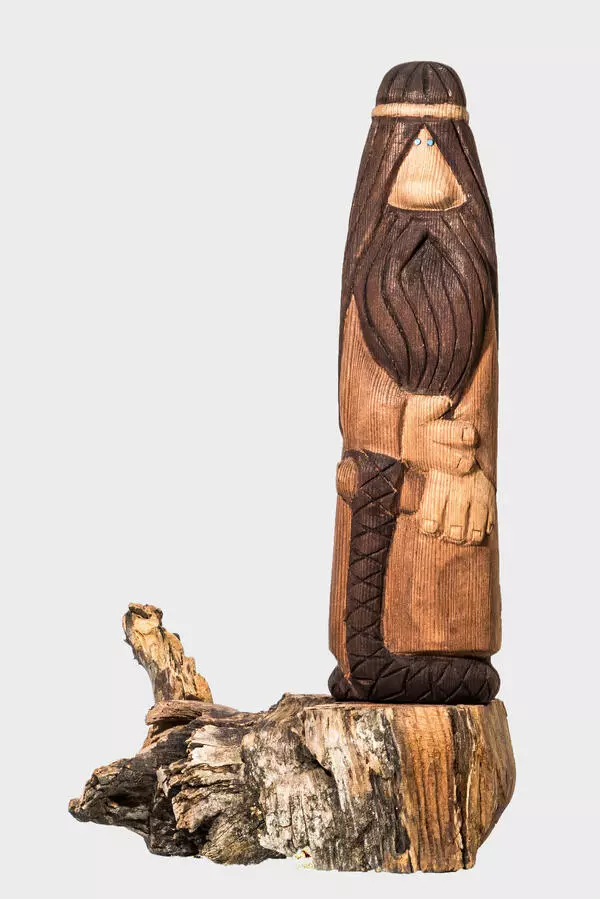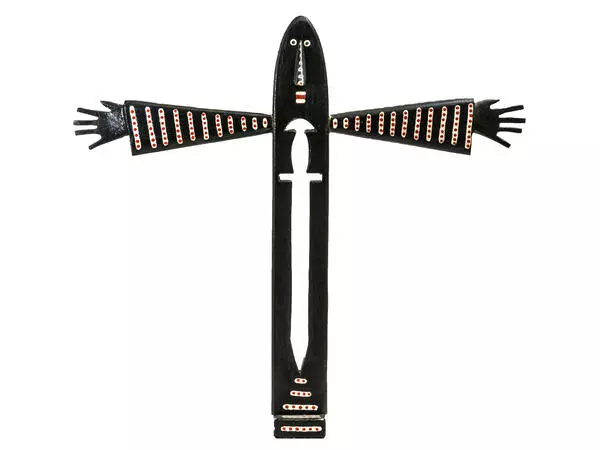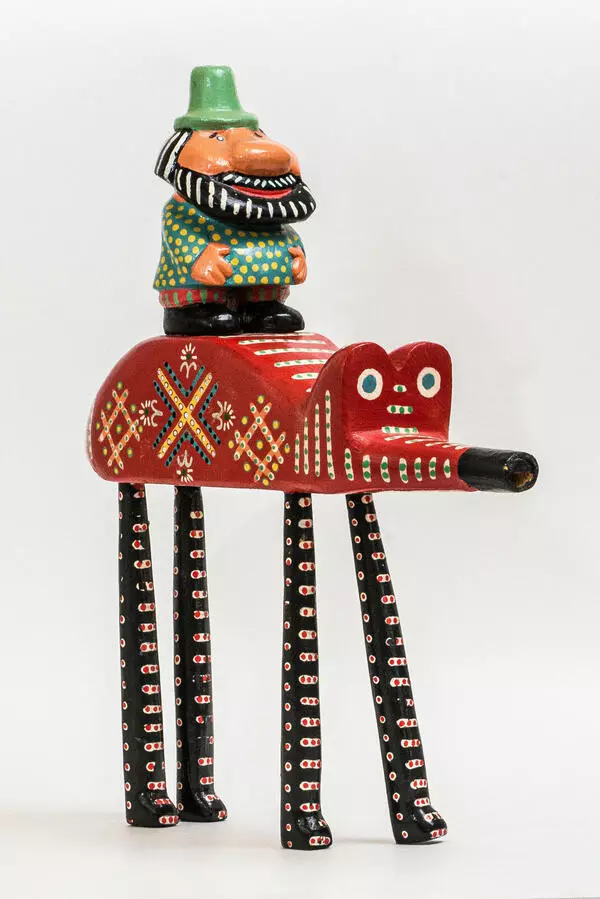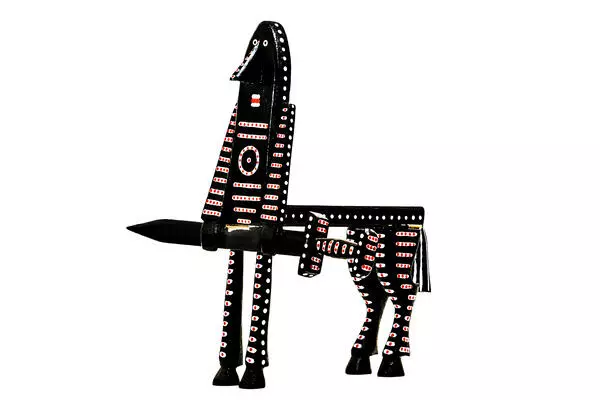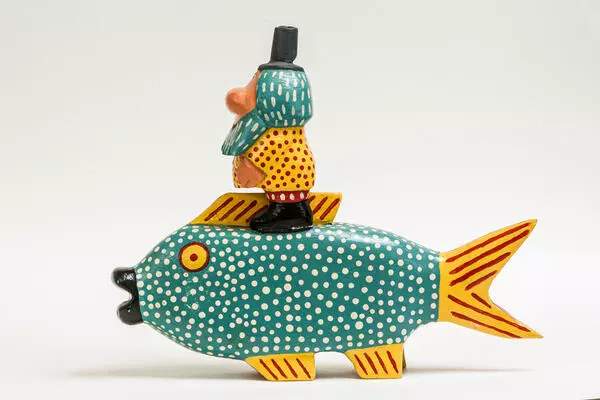The collection of the ‘Gamayun’ Museum Center includes several wooden figures that were created at different times by the self-taught Ural sculptor Nikolai Zykov. Among them, there is an unusual creature — a Crocodile, or a Whangdoodle.
The sculpture has the most generalized form, simplified outline, and bright colors. The fictional creature combines both archetypal and folklore traditions. It reminds us of the Great Beast, whose image comes from the spiritual poems of the 17th–19th centuries — folk songs with Christian narratives.
These peculiar religious amateur paintings included folk ideas about ‘Mother of all animals’ — the most powerful creature among animals, fish, and birds. The Great Beast was similar to the myth hero, had magical power, and even played the role of a protector.
Many artists of Primitivism turned to the image of the Great Beast. For example, Henri Rousseau depicted it as a tiger or a lion, and Niko Pirosmani portrayed it as a black deer.
The sculptor Nikolai Zykov became famous due to lucky circumstances. In 1983, at the Central Andrey Rublev Museum of Ancient Russian Culture and Art, he met a Frenchwoman Lisette Buchet and gave her a figurine as a souvenir. Later, Zykov began to send his wooden sculptures to his friend in France. And three years later, in one of the letters from Buchet, he learned that six of his works were accepted as a gift by Musée de l’Homme in Paris.
At the same time, the Museum of Amateur Art of the Peoples of Russia acquired five sculptures of small forms from Nikolai Fedorovich. In 1989, the artist took part in an exhibition organized by the Soviet Cultural Foundation.
In the Urals, Nikolai Fedorovich gained recognition in 1990. Later, Zykov wrote, ‘Yekaterinburg turned its face toward me. This happened, first, thanks to Nina Arsenyevna Haderi. She was the first art critic in Yekaterinburg who paid serious attention to me. Thanks to her good grace, from that time on, I began to exhibit my works in the city regularly’.
Since then, wooden and ceramic whangdoodles and wood spirits have become the main theme in the artist’s work.
The sculpture has the most generalized form, simplified outline, and bright colors. The fictional creature combines both archetypal and folklore traditions. It reminds us of the Great Beast, whose image comes from the spiritual poems of the 17th–19th centuries — folk songs with Christian narratives.
These peculiar religious amateur paintings included folk ideas about ‘Mother of all animals’ — the most powerful creature among animals, fish, and birds. The Great Beast was similar to the myth hero, had magical power, and even played the role of a protector.
Many artists of Primitivism turned to the image of the Great Beast. For example, Henri Rousseau depicted it as a tiger or a lion, and Niko Pirosmani portrayed it as a black deer.
The sculptor Nikolai Zykov became famous due to lucky circumstances. In 1983, at the Central Andrey Rublev Museum of Ancient Russian Culture and Art, he met a Frenchwoman Lisette Buchet and gave her a figurine as a souvenir. Later, Zykov began to send his wooden sculptures to his friend in France. And three years later, in one of the letters from Buchet, he learned that six of his works were accepted as a gift by Musée de l’Homme in Paris.
At the same time, the Museum of Amateur Art of the Peoples of Russia acquired five sculptures of small forms from Nikolai Fedorovich. In 1989, the artist took part in an exhibition organized by the Soviet Cultural Foundation.
In the Urals, Nikolai Fedorovich gained recognition in 1990. Later, Zykov wrote, ‘Yekaterinburg turned its face toward me. This happened, first, thanks to Nina Arsenyevna Haderi. She was the first art critic in Yekaterinburg who paid serious attention to me. Thanks to her good grace, from that time on, I began to exhibit my works in the city regularly’.
Since then, wooden and ceramic whangdoodles and wood spirits have become the main theme in the artist’s work.
